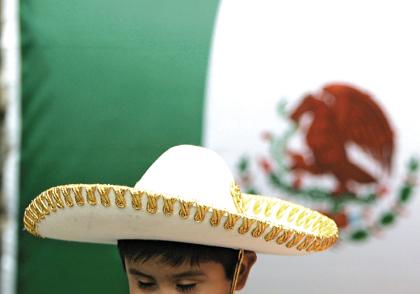By Alex Christodoulides
Immigration to the United States is declining among less-educated young Hispanics, according to a study released last week by a Washington, D.C., think tank.
The Center for Immigration Studies, a nonprofit think tank devoted to research and policy analysis of the various impacts of immigration on the United States, analyzed data collected in the Current Population Survey, collected monthly by the U.S. Census Bureau, through May 2008.
The group said the statistics show an estimated decline of 11 percent in the illegal immigrant population, down to 11.2 million, after reaching a peak of 12.5 million people in August 2007.
The group contends the decline is primarily due to tighter enforcement, and less so to the faltering economy, because only the illegal immigrant population seems to be affected and the change became apparent before there was a rise in the unemployment rate.
Although a bill in Congress that would have legalized undocumented immigrants was defeated in June 2007, the U.S. Border Patrol had already increased the number of agents along the fenced portion of the Mexico-U.S. border, and the number of deportations has increased in recent years, wrote report authors Steven Camarota, the think tank's director of research, and Karen Jensenius, the Center for Immigration Studies' demographer.
Since 2007, 11 states including Rhode Island, Georgia, Arizona, Mississippi, Missouri and Oklahoma, have begun requiring some employers to screen workers using the E-Verify program, which checks a worker's immigration status, a fact that “has the effect of conveying to illegal immigrants and perhaps their employers that enforcement is not only increasing, but that enforcement resources are growing,” the authors noted.
A graph shows a steep increase in the percentage of unemployed among the population of less-educated, Hispanic, illegal immigrants beginning in late 2007, around the time that most of the states that now require the E-Verify program opted to do so.
The report also compares the number of Hispanic immigrants between the ages of 18 and 40 with high school degrees or less, living in the U.S. to the total number of adult immigrants, and a graph shows the first population declining while the second rose.
The authors credit the different trends to increased enforcement efforts and a faltering economy.
“This is consistent with the idea that the enforcement of immigration laws is causing the decline,” the report read. “Of course, less-educated workers in general are more vulnerable to hardship during an economic downturn than are more-educated individuals.”
Reach reporter Alex Christodoulides by e-mail at achristodoulides@timesledger.com or by phone at 718-229-0300, Ext. 155.
































